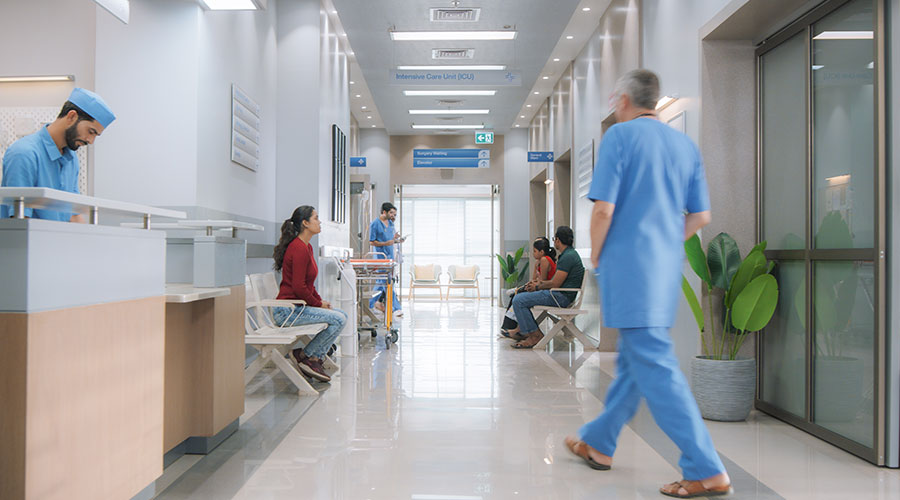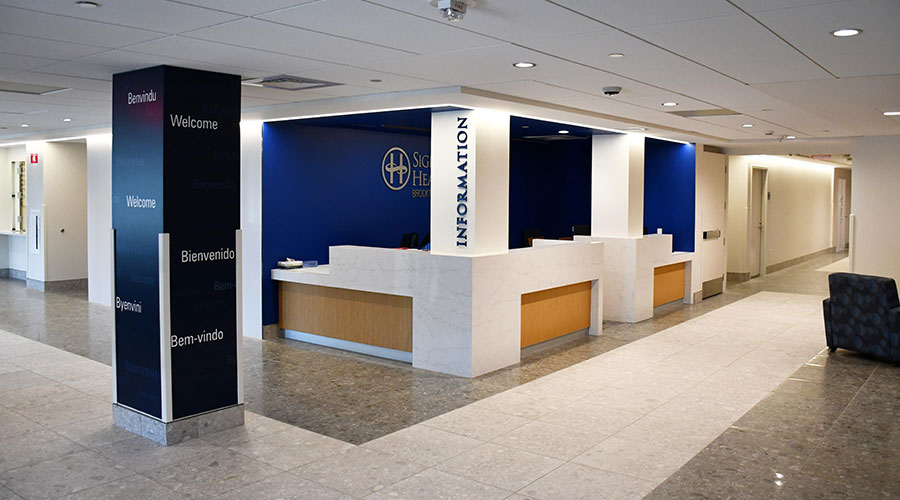Smart technology enables more efficient and streamlined operations for healthcare facilities, and lighting too can benefit from it. This technology can control various aspects and functions of lighting systems throughout a healthcare facility, meaning its use can be optimized in a simple manner. In this manufacturer roundtable, Healthcare Facilities Today speaks with lighting manufacturers about the advantages of smart lighting controls.
What are the advantages of smart lighting controls in a healthcare facility?
“Smart lighting controls offer healthcare facilities the ability to further improve overall patient care, increase staff efficiency and drive operational cost savings. A few of the countless and ever evolving features that smart lighting controls can provide include, personalized lighting capabilities, circadian lighting implementation, automated schedules, motion sensing, daylight harvesting, additional layers of energy savings, reduced maintenance costs, predictive maintenance scheduling and backend system analytics leveraging the power of AI and machine learning.”
— Rob Schmitz, marketing director, Toggled
“Smart lighting controls provide many advantages, often enhancing operational efficiency and improving patient care. They can regulate lighting in response to occupancy, time of day and natural light levels, creating considerable energy savings and cost reduction. Moreover, they foster patient well-being by emulating natural daylight patterns, positively influencing sleep, mood and recovery. The availability of personalized lighting options allows patients to manage their environment. At the same time, the integration of motion sensors ensures minimal disruption during nighttime checks.”
— Ron Farmer, chief executive officer, US LED
“Smart lighting controls in a healthcare facility offer several key advantages, particularly through the integration of technologies like occupancy sensors and daylight harvesting components within fixtures. Here are the main benefits:
- Energy Efficiency: With embedded sensors, such as occupancy and daylight harvesting, smart lighting systems can automatically adjust light levels based on the presence of people or the amount of natural light available. This reduces unnecessary energy consumption, especially in areas that do not require constant lighting, like hallways or unoccupied rooms.
- Cost-Effectiveness: Smart controls offer long-term savings by automating lighting and reducing the need for manual intervention. Dimming lights during certain hours or in areas with sufficient daylight lowers operational costs significantly.
- Improved Comfort and Flexibility: By enabling automatic dimming and adjustment of light levels, smart controls help create optimal lighting conditions for both patients and staff. The system can adapt to varying needs throughout the day, providing brighter light when necessary and dimming when less light is required.
- Energy Code Compliance and Sustainability: Smart lighting systems help healthcare facilities comply with modern energy codes by reducing unnecessary lighting. More importantly, these systems help lower the facility’s carbon footprint by minimizing energy consumption, contributing to sustainability goals.
- 24-Hour Operation Optimization: Many spaces in healthcare facilities, such as circulation areas and waiting rooms, have lighting on 24 hours each day. Smart lighting controls ensure that lights are only at full brightness when needed, helping to cut down on energy use in areas that don’t require constant high levels of light.
Incorporating these controls can significantly enhance the operational efficiency of healthcare facilities while improving patient care environments and reducing environmental impact.”
— Tommy Nichols, LC, business development director for healthcare, Acuity Brands
Jeff Wardon, Jr., is the assistant editor for the facilities market.

 Frederick Health Hospital Faces 5 Lawsuits Following Ransomware Attack
Frederick Health Hospital Faces 5 Lawsuits Following Ransomware Attack Arkansas Methodist Medical Center and Baptist Memorial Health Care to Merge
Arkansas Methodist Medical Center and Baptist Memorial Health Care to Merge Ground Broken on Intermountain Saratoga Springs Multi-Specialty Clinic
Ground Broken on Intermountain Saratoga Springs Multi-Specialty Clinic Electrical Fire Tests Resilience of Massachusetts Hospital
Electrical Fire Tests Resilience of Massachusetts Hospital Bomb Threat Alleged at Illinois Hospital
Bomb Threat Alleged at Illinois Hospital